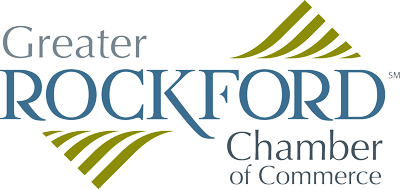The intersection of public and private
Tips on how businesses can work effectively with local government
By Christine Hand, managing editor
At the annual Greater Rockford Chamber of Commerce (GRCC) Pow(H)er conference on Nov. 13, a panel of local elected officials—Dawn Granath, 9th Ward alderwoman, Rockford City Council; Christina Valdez, 16th Ward councilwoman, Winnebago County Board; and Nicole Bennett, vice president, Rockford Public Schools Board of Education—will speak about their experiences running for public office.
For this article, we asked those same panelists to share their insights on how local businesses can work successfully with elected officials to build valuable relationships that benefit their companies and the community.
Communication is key
Most business owners and managers are far too familiar with the common interactions between business and government, such as permits, inspections, and other compliance issues. But there are a number of situations when direct communication with local elected officials is beneficial to both parties.
“Businesses should have conversations early about new ideas or new business ventures,” Granath said. “We’re a big city with small town connections. There’s probably some sort of government entity that can help. And your alderman is someone in your neighborhood who can help you identify the right combination of officials, nonprofits, and economic development organizations.”
Bennett agrees: “I always appreciate it when the community reaches out to me, because I want to be engaged and know what the needs are. That way, I can help elevate those requests by sending them on to the appropriate people.”
Valdez says getting to know your elected officials is essential to facilitating two-way communication: “There are a lot of things that we can help with and areas where we can provide clarity. We’re here to uplift the businesses in our districts. And we can’t do that to the best of our abilities if we’re not aware of what’s going on.”
Shared concerns and priorities
Overly burdensome bureaucracy is a common complaint among business leaders everywhere. (Just look at the responses to that question in GRCC’s quarterly business sentiment surveys.) It creates extra work and slows progress when time is money.
“I know many constituents feel that bureaucracy is a barrier to creating new things,” Granath said. “But it’s important to understand that some bureaucracy is needed to protect the taxpayers’ investment. We’re cautious, because we have to consider the long-term impact of a project. But we understand how frustrating it can be.”
Another potential roadblock that businesses can encounter is confusion about who owns what when it comes to the City of Rockford and Winnebago County. “When you’re in it, you understand those nuances,” Valdez said. “But I wouldn’t expect anybody else to be able to properly distinguish between a city guideline and a county guideline.”
Workforce development and a healthy talent pipeline are priorities shared by local businesses and the school board. “Obviously, businesses have a vested interest in the superintendent search. It was very important to Board President Carpenter and I that we get feedback from local businesses. The district hosted listening sessions specifically for the business community and unions,” Bennett said. (See the article on page 12 about the GRCC task force created to aid District 205 in its search.)
Common misconceptions
Some constituents mistakenly believe that a single board member can snap their fingers and make things happen. “I can connect somebody with the proper person, but I’m not involved in the day-to-day operations of Rockford Public Schools,” Bennett said. “School board members have a balcony-level view of the district, but we’re not the actors on the stage.”
It’s also helpful to remember that it takes the majority of the people on any governing board to get something done. It’s not just about individual board members wielding power.
Valdez believes that biggest misconception about the Winnebago County board is that everyone is very siloed and partisan. “My experience has been that people are more than willing to work across the aisle, especially when it comes to economic development and economic enhancement,” she said. “I think that is one of our greatest strengths in this region. And as long as we keep moving in this direction, we’re going to accomplish amazing things in the next 10 to 20 years.”
Best ways to connect
Surprisingly, all three elected leaders agreed that a phone call is one of the best ways to communicate with them.
“We get so many invitations from constituents,” Granath said. “Sometimes it can be more useful to make a phone call or invite me for a quick coffee to bring me up to speed on something. There are so many interesting things going on and so much I need to learn about. Real conversations help in that regard.”
Bennett feels that any communication is useful, whether it’s reaching out to board members directly, attending board meetings, or having a conversation at a Chamber event. “But time is limited at board meetings, so make sure your message is clear and you know what your goals are,” she said.
Making a public comment at a board meeting or council meeting may seem like overkill, but you get the benefit of addressing all of the members at once and having your remarks entered into the notes.
“I am a huge proponent of picking up the phone, but there is absolutely no wrong way to communicate—phone, text, email, in person—everything is great,” Valdez said. “Just sending your elected official a bi-annual email update helps us know what’s going on within our district and helps us identify where we may be of assistance.”
Final word
Business leaders are encouraged to let their elected officials know when they encounter obstacles or need assistance. But remember—it’s always best when a complaint comes with a potential solution. And sharing the good things that are happening can be just as instructive as pointing out the bad.
